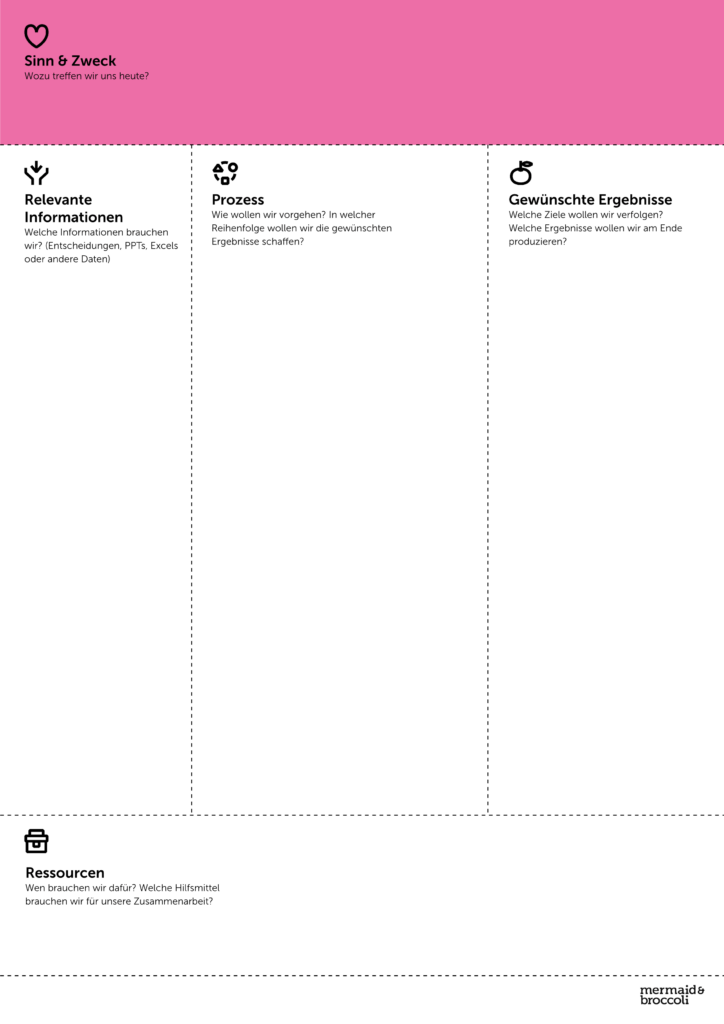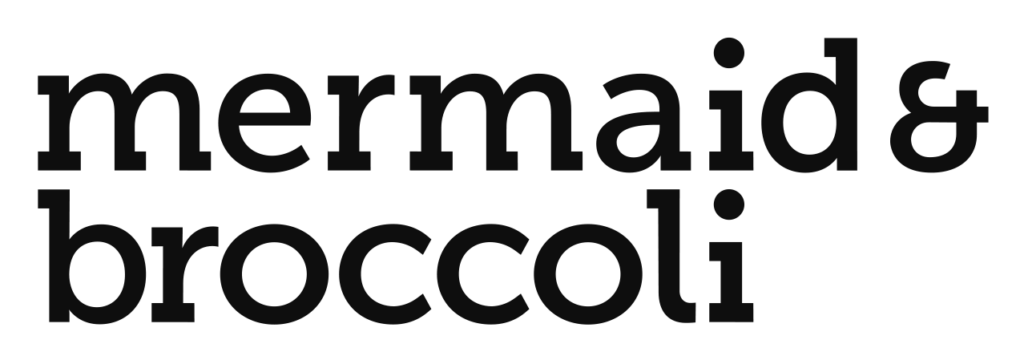The Pentagenda gives meetings the necessary structure
Poorly prepared meetings are real time wasters. Without a clear structure and objectives, they often produce unnecessary results, participants digress and crucial issues remain unresolved. Productivity is massively impaired. The result is frustration for everyone involved. One good solution, which was tested in a study by three universities in the UK, may well be meeting-free days. But you still need meetings and opportunities for coordination. At the same time, well-prepared meetings and workshops can also achieve a great deal and enable everyone involved to contribute to important processes in the organization.
We prefer to use Christiane Schneider’s Pentagenda from Groupmind for this purpose. Users of our portal can find it in our Methodbox.
How is the Pentagenda now being put to good use?

All meeting participants are equipped with post-it notes or have remote access to a virtual board (e.g. Mural, Miro). Now work your way clockwise along the fields. All results are visualized. A team can use the Pentagenda together or get help from a facilitator.
Start with the “purpose” of the meeting:
Here, we search together for the answer to the “why”. What is the benefit of this meeting, why is it taking place? This point is often neglected, but it is extremely important that all participants develop a common understanding of what the purpose and benefit of this meeting is. A clearly defined purpose not only creates clarity, but also motivation and focus for the participants.
Continue with the desired outcome:
This field asks for the “what”: What do we want to have achieved at the end of the meeting and take away as a tangible result? It is important to set concrete and measurable goals. This could be a decision, a plan or a solution to a specific problem. Clear objectives help to keep the meeting structured and results-oriented. Ideally, you can go through the list of desired outcomes at the end of a meeting and tick them off one by one.
Resources are the next point:
Here it is clarified once again what resources are available to achieve the stated purpose and the desired outcomes. It is clarified once again whether all participants are in the meeting for the entire time, whether the room is blocked and what other material or technology is required. This answers the question: What do we need to make the meeting a success? This can be physical resources such as flipcharts and markers as well as the participants who are present at the meeting.
Relevant input:
Do we have all the necessary materials, information etc. to achieve our desired result? This point answers the question: What material can support us in achieving the result? Here it can be helpful to gather input from the participants in advance of the meeting to ensure that all the necessary information is available. We look for information and data that is relevant to the discussion.
The process comes last:
This is where you record how the meeting should proceed. Attention! This is a step-by-step approach rather than a complete agenda. Together (or the facilitator suggests) you look at the results to be achieved and decide which point to start with. Once this agenda item has been completed, the remaining time is evaluated and a decision is made on which topic to address next and how to proceed (in plenary, or small working groups, timebox, etc.). This flexible approach makes it possible to adapt dynamically to the circumstances of the meeting and set priorities as required.
Checking off gives a feeling of satisfaction:
The achieved outcomes are “ticked off” on the pentagenda and the to-dos and task packages are recorded with “who, by when, what”. This ticking off gives the participants a feeling of satisfaction and progress. It clearly shows what has already been achieved and what steps need to be taken next.
Advantages of using the Pentagenda:
With the pentagenda, you can not only structure meetings in advance, you can also use it ad hoc at the start of a meeting and co-create the structure with the other participants. This even has the advantage that everything feels responsible for the desired results. This increases the effectiveness and productivity of meetings. In addition, the Pentagenda encourages active participation by all members, as everyone knows what is expected and what role he or she plays.
Pentagenda – so helpful, it inspires poetry
The employees of a major client in the chemical industry organized a very cheerful and touching virtual online event for us to say goodbye and give us feedback on our work. One of them, Michael R., was so enthusiastic about our Pentagenda that he wrote the following poem:
Pentagenda, oh Pentagenda,
a tool for planning, a true legenda.With five sections to organize,
my tasks and goals are no longer disguised.m&b enriched my work life goals,
I thank them with all my soul.Pentagenda, oh Pentagenda,
my life now smells like sweet lavender.



